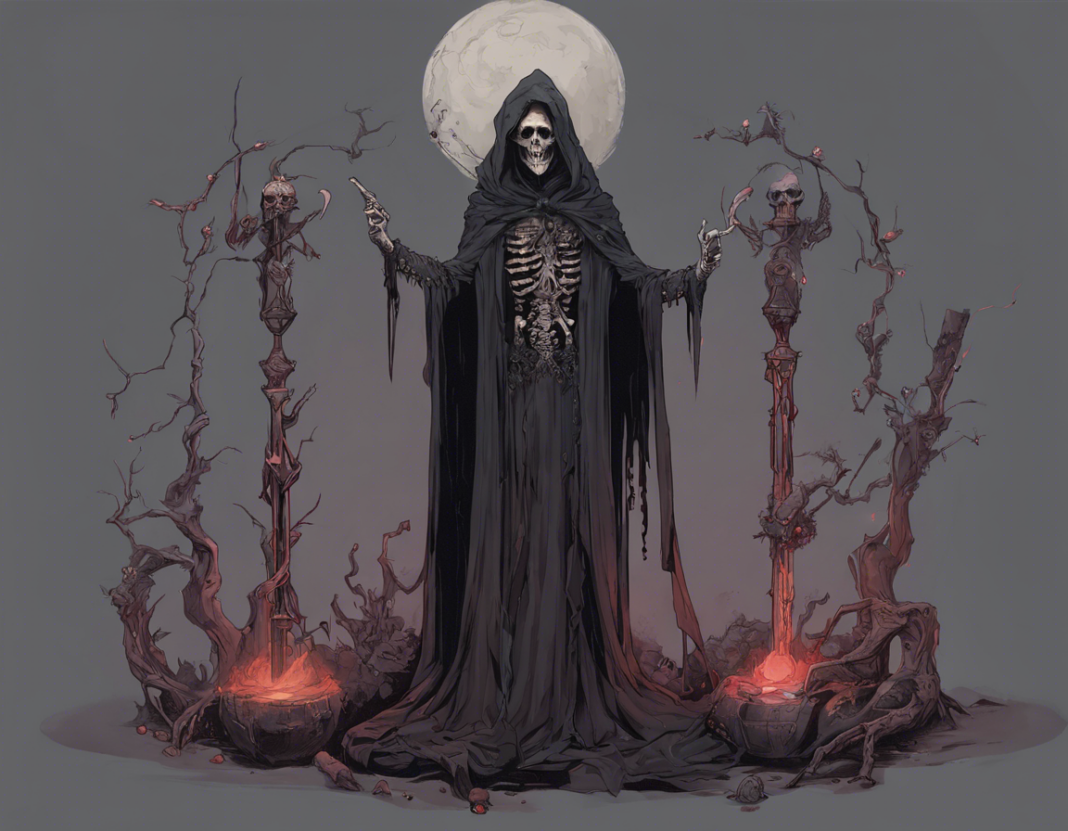The dark arts have intrigued and fascinated individuals for centuries, with one of the most iconic figures being the necromancer. A necromancer is often depicted as a powerful sorcerer or wizard with the ability to communicate with and reanimate the dead. This mysterious and oft-misunderstood practice has captured the imaginations of many, whether through literature, movies, or tabletop role-playing games. In this comprehensive guide, we will delve into the world of necromancy and provide a detailed overview of what it means to be a necromancer, the fundamentals of necromantic magic, and how to harness its powers.
The Origins of Necromancy
Necromancy originates from the ancient Greek word “nekromanteia,” which translates to “prophecy by the dead.” The practice has a long and storied history, with references to necromancy found in various cultures and mythologies. In some traditions, necromancers were revered as spiritual leaders who could communicate with the deceased to gain wisdom and guidance. However, in more modern interpretations, necromancers are often portrayed as sinister figures who manipulate the dead for their own gain.
What Is Necromancy?
Necromancy is a form of magic that focuses on communicating with and manipulating the dead. Practitioners of necromancy, known as necromancers, have the ability to raise corpses, speak with spirits, and divine knowledge from the deceased. Necromancy is a complex and intricate practice that requires a deep understanding of life, death, and the spirit world.
The Fundamentals of Necromantic Magic
-
Rituals and Spells: Necromancers use intricate rituals and spells to channel their powers and communicate with the dead. These rituals often involve incantations, sacrifices, and offerings to the spirit world.
-
Ancestral Spirits: Necromancers believe in the power of ancestral spirits and often call upon them for guidance and assistance in their magical workings. Ancestor veneration is a key aspect of many necromantic traditions.
-
Corpse Reanimation: One of the most well-known aspects of necromancy is the ability to reanimate corpses and create undead minions. This requires a strong command of dark magic and a deep connection to the spirit realm.
Tools of the Necromancer
-
The Grimoire: Necromancers often keep a grimoire, or a book of spells and rituals, to record their magical knowledge and experiences. The grimoire is a necromancer’s most prized possession and is often passed down through generations.
-
The Scythe: A symbol of death and rebirth, the scythe is a common tool used by necromancers in their magical workings. It is used to channel energy, break spiritual barriers, and harvest the souls of the dead.
-
The Ossuary: An ossuary is a container or room used to store human bones. Necromancers often use ossuaries in their rituals and ceremonies to connect with the spirits of the deceased.
The Ethics of Necromancy
Necromancy, being a practice that deals with death and the afterlife, raises ethical questions and concerns. Many view necromancy as forbidden magic, as it involves tampering with the natural order and the spirits of the deceased. Necromancers must navigate a fine line between power and responsibility, as the consequences of their actions can be dire.
The Balance of Life and Death
Necromancers often grapple with the moral implications of their magic and the impact it has on the living and the dead. It is essential for necromancers to understand and respect the delicate balance between life and death, lest they unleash forces beyond their control.
Karmic Consequences
The practice of necromancy is often believed to have karmic repercussions, with the energy expended in raising the dead returning to the necromancer in unexpected ways. Many caution against using necromantic powers for selfish or malevolent purposes, as the consequences can be severe.
The Necromancer’s Code
Some necromancers adhere to a strict code of ethics to guide their actions and ensure they use their powers responsibly. This code often emphasizes respect for the dead, the importance of consent from spirits, and the avoidance of dark or malevolent magic.
FAQ: Frequently Asked Questions
1. Is necromancy real?
Yes, necromancy is a real practice that has been documented throughout history in various cultures and belief systems. While the reanimation of corpses may be the stuff of myth and legend, the spiritual aspects of necromancy, such as communicating with the dead, are a core component of many mystical traditions.
2. Can anyone become a necromancer?
Becoming a necromancer requires a deep understanding of magic, death, and the spirit world. While anyone can study and learn the principles of necromancy, not everyone has the innate talent or affinity for this dark art. It is a path that requires dedication, discipline, and a willingness to confront the darker aspects of existence.
3. What dangers are associated with practicing necromancy?
Practicing necromancy comes with inherent risks, including spiritual possession, karmic backlash, and exposure to malevolent forces. Necromancers must be vigilant in protecting themselves and establishing boundaries with the spirits they contact to avoid unintended consequences.
4. Are there different types of necromancy?
Yes, there are various branches of necromancy, each with its own practices and beliefs. Some necromancers focus on divination and spirit communication, while others specialize in raising the dead and creating undead minions. The type of necromancy a practitioner chooses to study depends on their interests and goals.
5. How can one learn necromancy?
Learning necromancy typically involves studying ancient texts, practicing rituals and spells, and honing one’s intuition and connection to the spirit world. Many practitioners seek out mentors or join occult groups to gain knowledge and experience in the craft. It is essential to approach the study of necromancy with respect and a willingness to learn from both success and failure.
In conclusion, necromancy is a complex and multifaceted practice that delves into the realms of life, death, and the unknown. Aspiring necromancers must approach this dark art with reverence, caution, and a deep respect for the forces they seek to harness. By studying the fundamentals of necromancy, understanding its ethical implications, and embracing the mysteries of the afterlife, one can unlock the secrets of this ancient and enigmatic practice.

